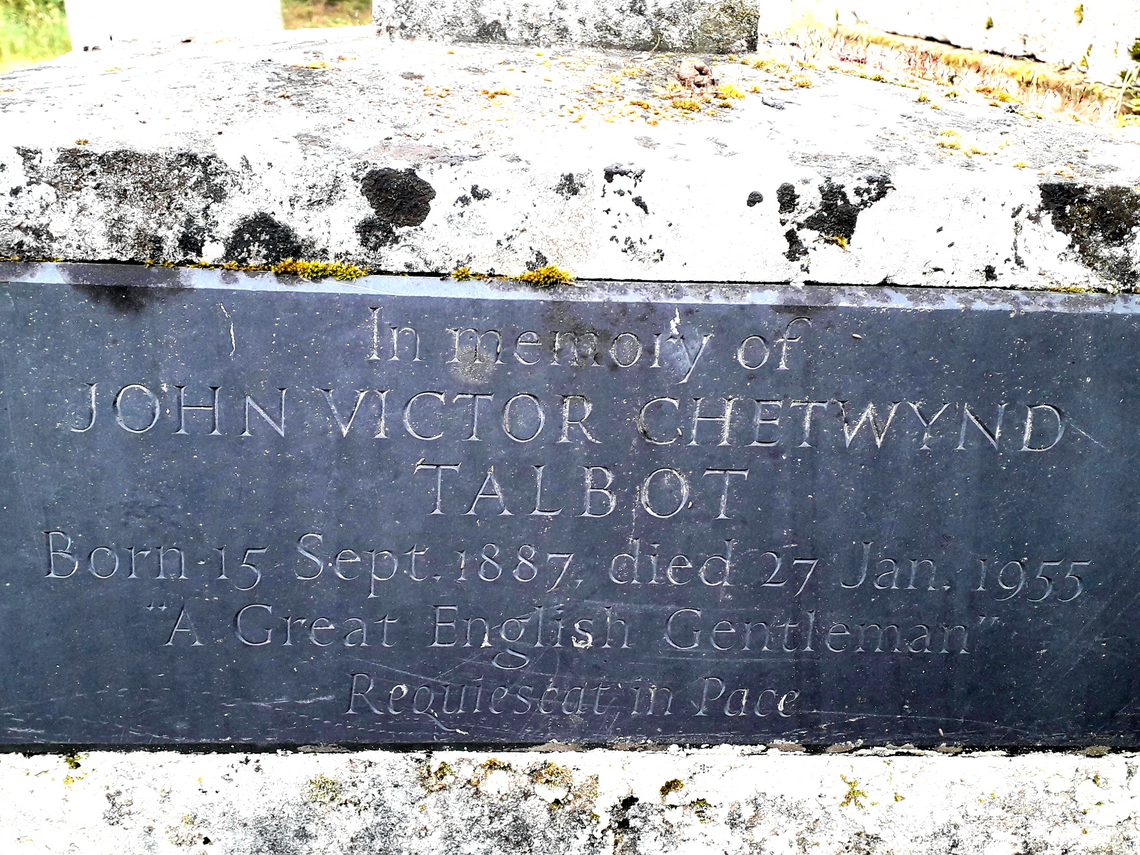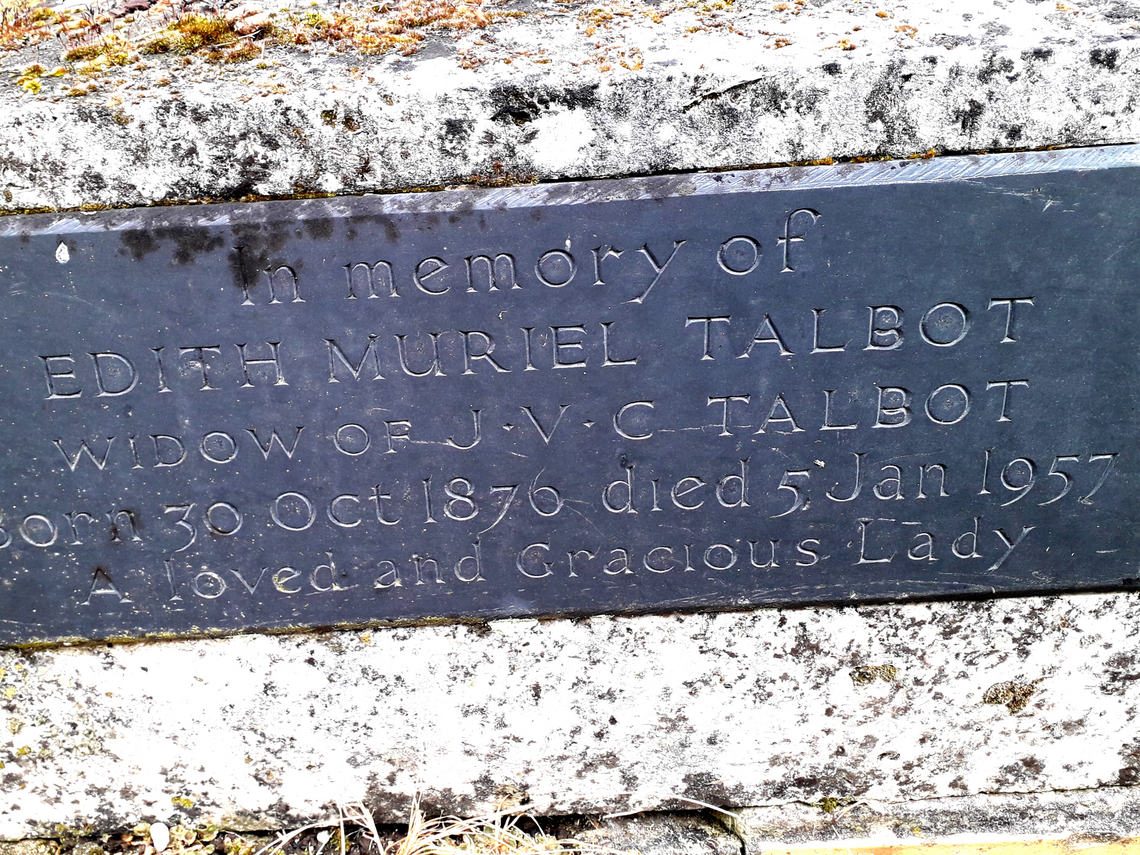John Victor Chetwyn Talbot (1887-1955) - by Gilly Cunningham
John Victor Chetwyn Talbot, late of The Old Hall, Bartlow lies, with his wife, Edith, in St. Mary’s Churchyard under a stone telling us he was “A Great English Gentleman”.
In the late 1930s Lord de Ramsey bought Bartlow estate from Lord Brocklebank’s son and put his relative, John Talbot, in as Estate Manager based at The Old Hall to run it with him. Lord de Ramsey then went off to war and was quickly captured by the Japanese. Being busy surviving, he took no further part in either the War or the running of his new estate. John Talbot was left in charge assisted by his wife. In the absence of Lord de Ramsey, Talbot was the de facto Lord of the Manor and seems to have relished the role.
At the outbreak of War John Talbot became an Air Raid Warden and ran the local War Agricultural Committee. These WarAG committees were very powerful and could tell local farmers what they could and couldn’t grow for the War effort. They could even confiscate land if it wasn’t being farmed productively. Mrs. Talbot ran the local W.V.S. and the Red Cross and was the Billeting Officer for evacuees arriving in the village. It was while they were living in Bartlow during the War that Edith’s son, Captain Richard Potter, died at the age of 39 after an accident while serving with the Royal Artillery. There is a commemorative plaque in the Church, but the inhabitants of Bartlow would not have known she had a son.
Perhaps because of their wartime roles they were not popular in the Village. People who knew the Talbots do not now speak fondly of them. They were held more in respect than affection and ‘rather grand’, ‘pompous’, ‘lordly’ and ‘dismissive’ are descriptions used of them. The feeling seems to have been that the Estate Manager had got above himself and was assuming undeserved airs and graces. There were even rumours in the village that Mrs. Talbot was of gypsy stock! But the Talbots had a romantic, even scandalous, history. Had the villagers of Bartlow known this they might have seen them differently.
John Talbot was of aristocratic birth. Related to the Earl of Shrewsbury he was the second son of very wealthy landowner parents with whom he lived at Aston Hall in Cheshire (now converted into a large country house hotel) – one of five children. The 1901 census (when John was 13) shows the family having a butler, a cook, 4 housemaids, a kitchen maid, a footman, a coachman, grooms, gardeners and a laundress. Not exactly Downton Abbey but not the background of an Estate Manager – even a second son. Something had gone wrong.
John had joined the Grenadier Guards and was made Probationary Second Lieutenant in 1908 aged 21. At about this time he met and apparently fell head over heels in love with Edith Muriel Potter. Not an aristocrat but from a good family, her father a successful Nottinghamshire lawyer with over 70 employees but still she was not exactly what John’s family would have had in mind for a daughter in law. She was 11 years older than John, she lived abroad, she had three children under 9, and she was already married – to an American.
Edith’s husband, Thomas Potter, had no occupation other than to accompany his extremely wealthy, divorcee mother on her many world tours. The Potter ménage were living in Dinard in France which was at this time a playground for the indolent and wealthy – people with too much money and too much time on their hands. Mr. Potter seems to have been a violent, womanising drunk who had recently told Edith he was himself terribly in love with a Miss Alice Lloyd of Dinard whom he wanted to marry - overlooking the fact he was already married with three children …..easily done perhaps in Dinard in the dying days of the Belle Epoque.
Presumably to give their marriage another go, the Potters decided to move back to England even though Mr. Potter was known to detest the place. Edith, his wife, was trying to find a suitable house and John Talbot was assisting for some reason. The Potters were in temporary accommodation in London in May 1909 when things came to a head.
Mr. Potter found letters addressed to Edith from John Talbot. We do not know their contents but Potter flew into a rage, chased her around the house and attacked her. She fled to stay with a friend and the next day she and John Talbot returned only to collect the three children and take them off to the Talbot family home at Aston Hall.
Mr. and Mrs. Potter then raced each other to their respective solicitors – Mr. Potter won and filed his petition for divorce on 27th May, 1909 on the grounds of his wife’s adultery with John Talbot. Edith’s own petition on the grounds of Mr. Potter’s cruelty was filed the very next day. Allegations flew thick and fast. She never denied the adultery but contested Mr. Potter’s petition on the legal technicality that he did not have English domicile at the time he filed, having no real intention to live permanently in England.
In the course of the protracted proceedings Mr. Potter got an order for contact to the children but failed to see them. Edith obtained an alimony order for £3 a week to support the children but Mr. Potter refused to pay it on the basis he had no money of his own and was entirely dependent upon his mother.
None of this would have done John Talbot’s reputation any good at all. By 1911 the Census shows him living without servants and working as a farmer Nr Newbury in Hampshire. He is listed in this census as living with his ‘sister’ – Edith Muriel Potter and his two young ‘nephews’ Thomas and Richard Potter aged 7 and 9. No mention of the eldest Potter child who may well have been living with her father.
Mr. and Mrs. Potter’s divorce eventually went through and in March 1914 John Talbot married Edith Muriel Potter in the District of St. Georges, Hanover Square - not in Church but discreetly in the Registry Office. John Talbot’s Mother was one of the witnesses so she must have forgiven him for his scandalous lifestyle. John and Muriel continued their farming career moving from Newbury to the Isle of Wight by 1921 and eventually to Bartlow in the late 30s.
John Talbot died at The Old Hall in January 1955 aged 67, his scandalous past well behind him. The chilly funeral took place at St. Mary’s Church and was written up very fully in the local paper. It was clearly ‘a bit of a do’. The church must have been packed - over 200 mourners before we even get to the estate staff. Mourners included the Earl and Countess of Shrewsbury (who were Talbots themselves), Lord and Lady De Ramsey, Lady Rose Jeffreys, Lady Mary Jeffreys, Capt. Mark Jeffreys representing General Lord Jeffreys, and Mrs. McCance (wife of Professor McCance). The newspaper report tells us he was one of Cambridgeshire’s leading farmers - well known for the excellent quality of his beef cattle, his two first-class flocks of sheep and the management of his arable land. We learn he also enjoyed a good day’s shooting or hunting. He left an estate of around £150,000 – about 3.8 million in today’s terms – a surprising amount as he was actually a tenant farmer. Edith died almost exactly two years later and is buried with him - “A Loved and Gracious Lady”.



